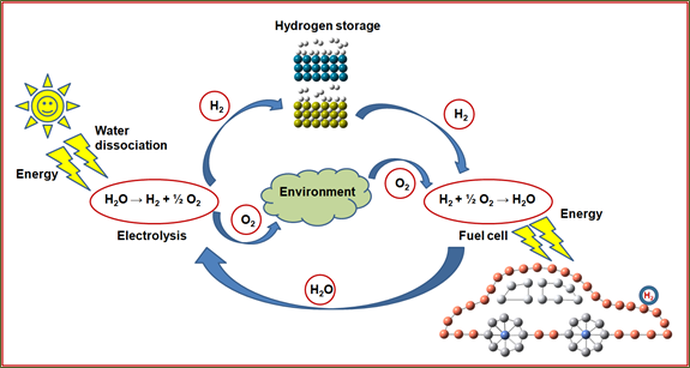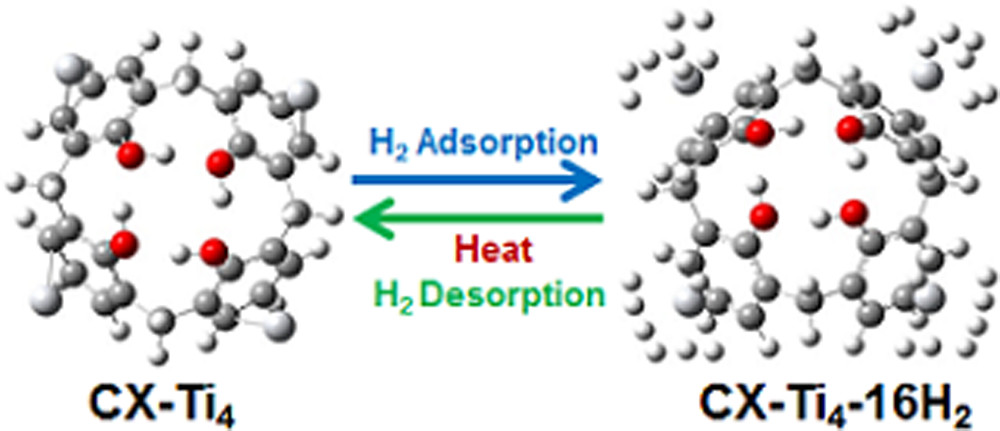Hydrogen Storage Materials
Hydrogen As Energy Carrier: A Fossil Fuel Substitute: Hydrogen produced by breaking water using sunlight is reversibly stored in new solid materials. Solid porous inorganic MOF materials activated with light metal have been explored for storage. When required hydrogen is released to fuel cell generating energy and run vehicles without petrol.

Metal-organic frameworks (MOF) have attracted attention for hydrogen storage as they offer high porosity, stability, can be flexibly designed through control of the architecture and functionalization of building blocks. The main drawback of MOFs is that they require low temperature for a sufficient amount of hydrogen adsorption. Organic linkers can be replaced with inorganic linker made up of B and N atoms. BN rings are also aromatic like benzene, therefore, light metals can be fictionalized on the linker for H2 adsorption. The theoretically predicted results of metal grafted BN analogues of MOFs will lead experimental researchers to the design and synthesize storage materials for use in fuel cell technology.


Calix[4]arene (CX) is functionalized with Ti and Li metals on the delocalized ? electrons of benzene rings, and the metal-functionalized system is studied for hydrogen storage efficiency by applying density functional theory. When the Ti atom is intercalated between the two CX moieties, the storage capacity does not reduce significantly. This study reveals that the Ti-functionalized CX is a potential reversible hydrogen storage material.
